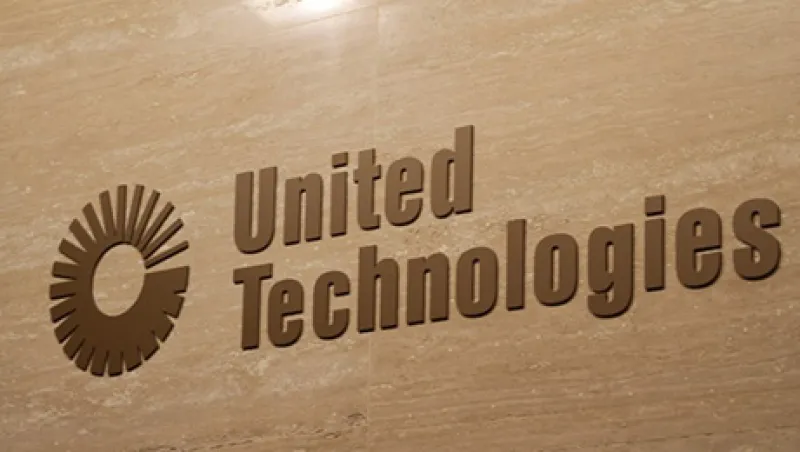Reports that portable alpha is dead have been greatly exaggerated, as Mark Twain might have phrased it. Another Connecticut Yankee, giant United Technologies Corp., is gearing up to grow its successful, nearly decadelong portable-alpha program.
The UTC strategy took flight a year after Robin Diamonte joined the Hartford, Connecticut–based multinational in December 2004. Today the $2.7 billion portable-alpha portfolio makes up 11 percent of the total $25 billion UTC pension fund — and it is about to get bigger.
At its most basic level, the complex strategy comprises three elements: the alpha, or outsize returns, of active managers (often using hedge funds); swaps or futures contracts that create the market, or beta, return; and a cash cushion to cover the derivatives contracts when they come due. The idea is to use the outsize hedge fund returns to juice up a passive market portfolio.
Not surprisingly, it took a little time for UTC’s pension advisory investment committee to become comfortable enough to approve the new portfolio. In addition to concerns about the leverage that comes with the derivatives contracts, the committee also questioned such hedge-fund-related issues as high costs, long lockup periods and lack of transparency.
“We called it absolute return to help the committee feel more comfortable,” explains Diamonte, describing the term of art for an investment that attempts to deliver positive returns in both up and down markets.
“We have very conservative volatility and alpha targets,” adds Julie Glynn, UTC’s director of pension investments, who oversees the absolute-return strategies. “We call it ‘hedge funds lite.’”
The UTC portfolio includes hedge funds from Analytic Investors, AQR Capital Management, Bridgewater Associates, Pacific Investment Management Co. and Two Sigma Investments, as well as a customized fund-of-one from fund-of-funds manager Pacific Alternative Asset Management Co. A customized fund of funds allows UTC to make adjustments based on its evolving needs, says PAAMCO CEO Jane Buchan. Hedge fund governance, investment office culture and segregation of duties are changing rapidly, especially for very large investors, she adds.
Diamonte uses Minneapolis-based Parametric Clifton (formerly Clifton Group) to handle its futures and swaps overlay. To manage its risk, UTC holds a substantial cash cushion, which is also overlaid with futures.
Portable alpha has had a checkered past. By the early 2000s it had become a popular strategy among large pension funds as investment consultants like Rocaton Investment Advisors in Norwalk, Connecticut, and Boston-based NEPC promoted the novel way to enhance index returns with hedge fund alpha. But when the credit crisis hit in 2008, some pension investors found that their hedge funds’ returns suddenly matched stock market beta, bringing their portfolios down by 30 percent. Derivatives contracts had to be covered, inducing further losses. The Pennsylvania State Employees’ Retirement System, the San Diego County Employees Retirement Association and other public pension funds ultimately exited the strategy.
“Portable alpha fell off the radar screen,” confirms Yariv Itah, a partner at asset management consulting firm Casey, Quirk & Associates. “It became a toxic term, and people don’t use it.”
For investors like UTC, however, the strategy has delivered as promised. There’s very low — less than 0.1 percent — beta exposure to credit markets, equity markets and duration, Glynn explains. Although the portfolio return was –7.8 percent in 2008, it rebounded to 10.8 percent in 2009. From April 2009 through the end of September 2014, the portable-alpha portfolio had a 29 percent cumulative return. Annualized excess returns over three-month Treasury bills have been about 2.3 percentage points over its benchmark, a conservative hedge fund portfolio.
“If you can find portable-alpha managers who are really market neutral, you can be successful,” says Diamonte.
Now the UTC CIO’s portable-alpha team, which includes program director Glynn and senior analyst Jason Josephiac, is looking for three or four more hedge fund managers to grow the portfolio. They anticipate hiring them in early 2015. Josephiac, who joined UTC in 2013 from Boston Co. Asset Management and does all initial manager searches, says the company wants to add new hedge fund strategies. One requirement: volatility of less than 8 percent. Managers near the 8 percent level need to demonstrate they provide a substantial diversification benefit, Josephiac says. “There aren’t many managers willing to put up 2 to 3 percent volatility because they get incentive fees,” he notes. “We’re trying to avoid large drawdowns because we have equity futures underneath.”
Diamonte and her team are confident that they will find willing managers.
Read more about Robin Diamonte in “United Technologies CIO Is Changing the Retirement Game.” Get more on pensions and hedge funds. Follow Frances Denmark on Twitter at @francesdenmark.






